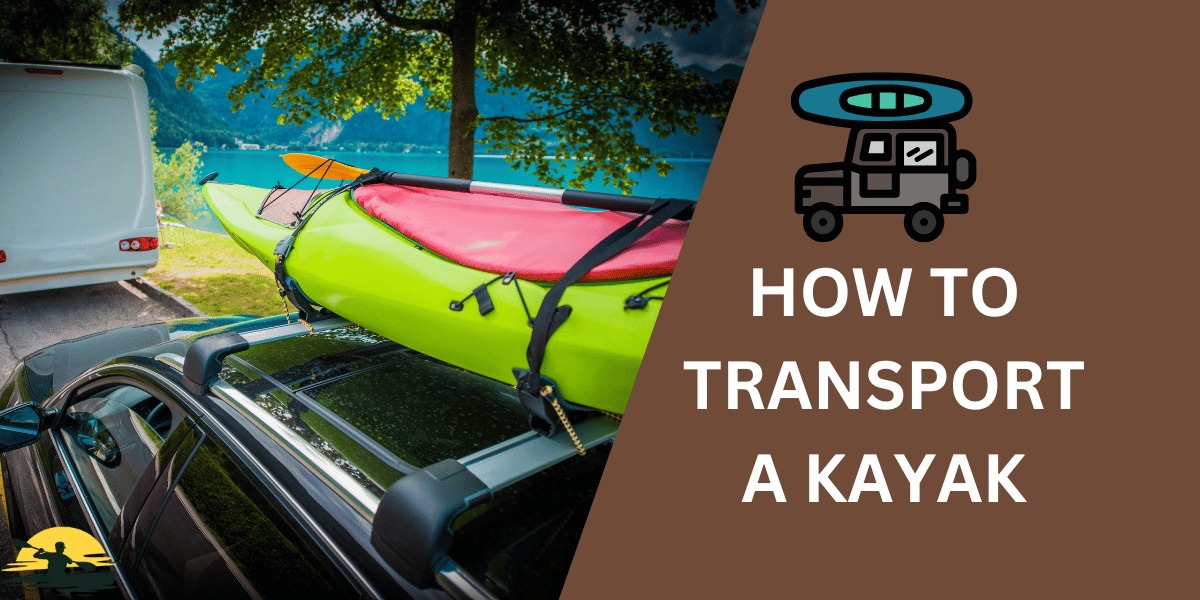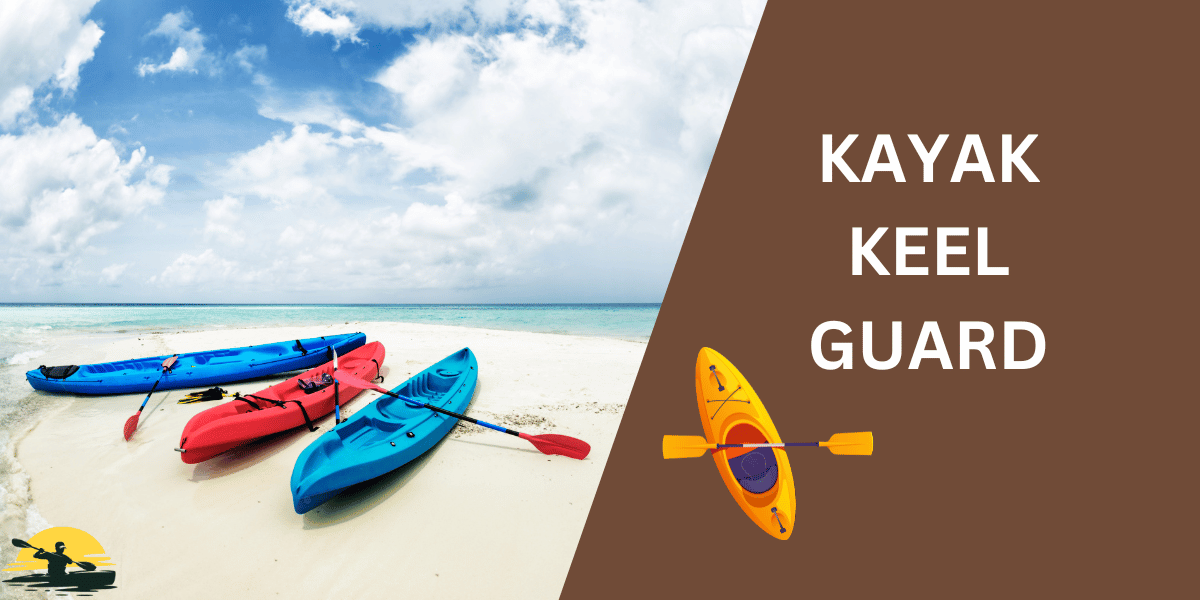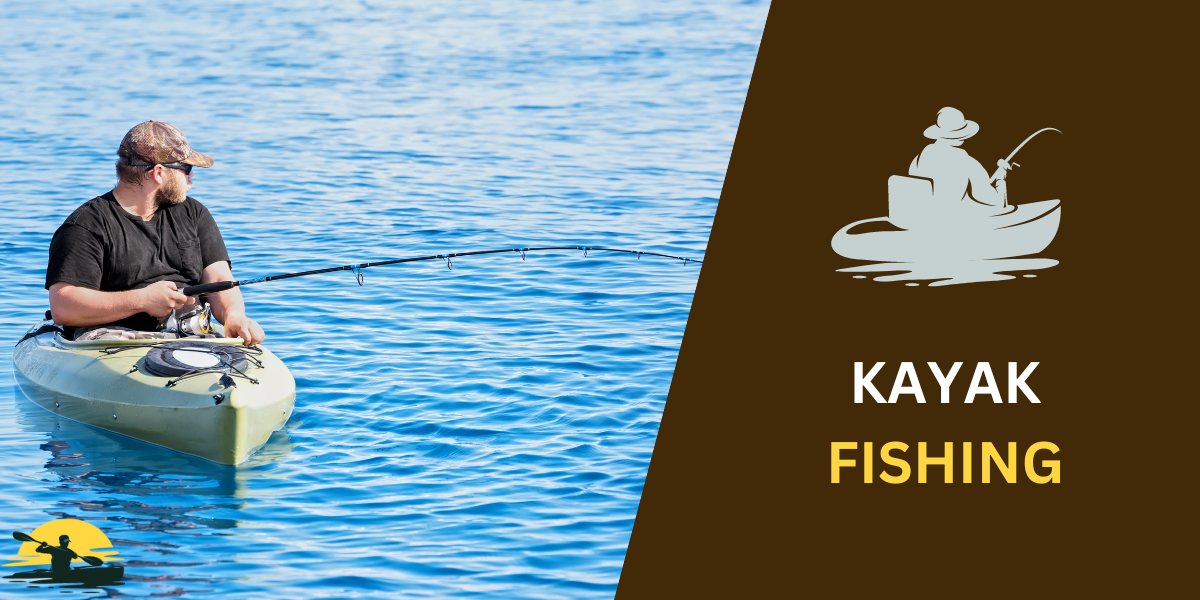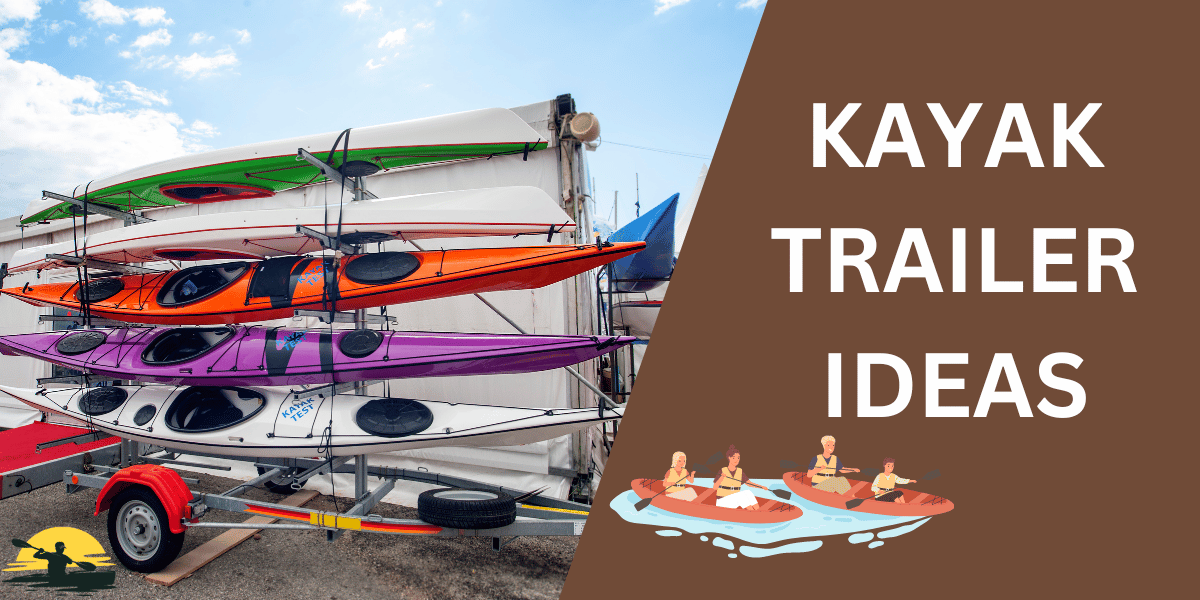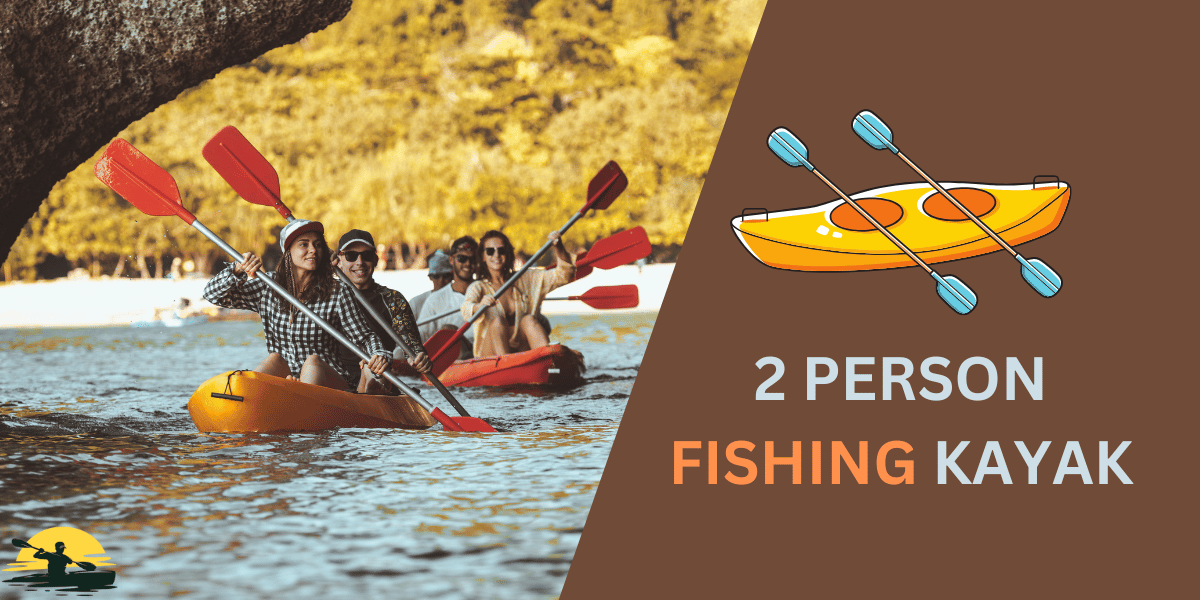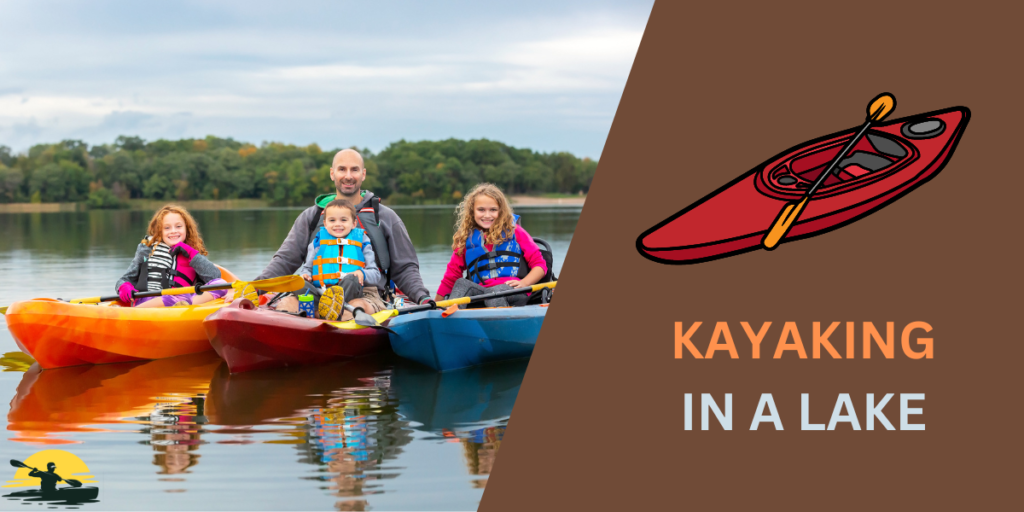
Embarking on a kayaking adventure in a lake combines the thrill of exploration with the serenity of nature’s embrace. But, as idyllic as it sounds, ensuring a smooth and enjoyable experience requires a bit of know-how. Whether you’re a seasoned paddler or a newcomer eager to dip your paddles into tranquil waters, navigating the nuances of kayaking in a lake can be daunting. Fear not, for we’ve compiled a comprehensive list of tips to guide you through, guaranteeing not just a safe journey but an unforgettable adventure.
Many enthusiastic kayakers leap into the experience without fully understanding the dynamics of lake kayaking. The lack of preparation can lead to challenges such as unexpected weather changes, difficulties in navigation, or even safety risks.
Imagine being caught off-guard by a sudden shift in weather, struggling to steer your kayak back to shore, or realizing too late that you’ve overlooked essential safety gear. Such scenarios can transform what should be a peaceful retreat into a stressful ordeal.
To ensure your lake kayaking adventure is nothing short of exhilarating, we’ve distilled essential tips and tricks that cover everything from safety protocols to effective paddling techniques and how to read the lake’s environmental cues. These insights promise not just to enhance your experience but to elevate it.
Kayaking in a lake offers a unique blend of physical exercise, mental relaxation, and a deep connection with nature. Whether you’re gliding through the calm waters of your own kayak, exploring the vast expanse of the largest lake nearby, or enjoying the simplicity of fishing with just your paddles and a dock nearby, kayaking provides an accessible, year-round opportunity for adventure, fitness, and tranquility. It’s an activity that caters to both beginners and seasoned paddlers, allowing everyone to explore the beauty of lakes, rivers, and shorelines while promoting health and well-being.
Armed with these tips, you’re set to enjoy the tranquility and excitement that kayaking in a lake has to offer. Let’s dive into the details and ensure your next kayaking adventure is both enjoyable and memorable.
Tips for Kayaking in a Lake
1. Choose the Right Kayak
Finding Your Perfect Kayak: Picking a kayak that suits your needs is crucial for lake kayaking. For calm lake waters, a sit-on-top kayak can be a great choice for beginners due to its stability and ease of entry. If you’re venturing into larger lakes like Lake Superior, consider a sit-inside kayak for better protection against cold water and waves. Personal experience taught me the importance of a comfortable seat and ample storage for longer excursions.
2. Wear a Life Jacket
Life Jackets: Non-Negotiable for Safety: Regardless of the calmness of the lake or your swimming prowess, wearing a life jacket is paramount. On lakes, conditions can change rapidly, and a life jacket is your first line of defense in an emergency. Opt for a life jacket designed for paddling, offering both comfort and mobility.
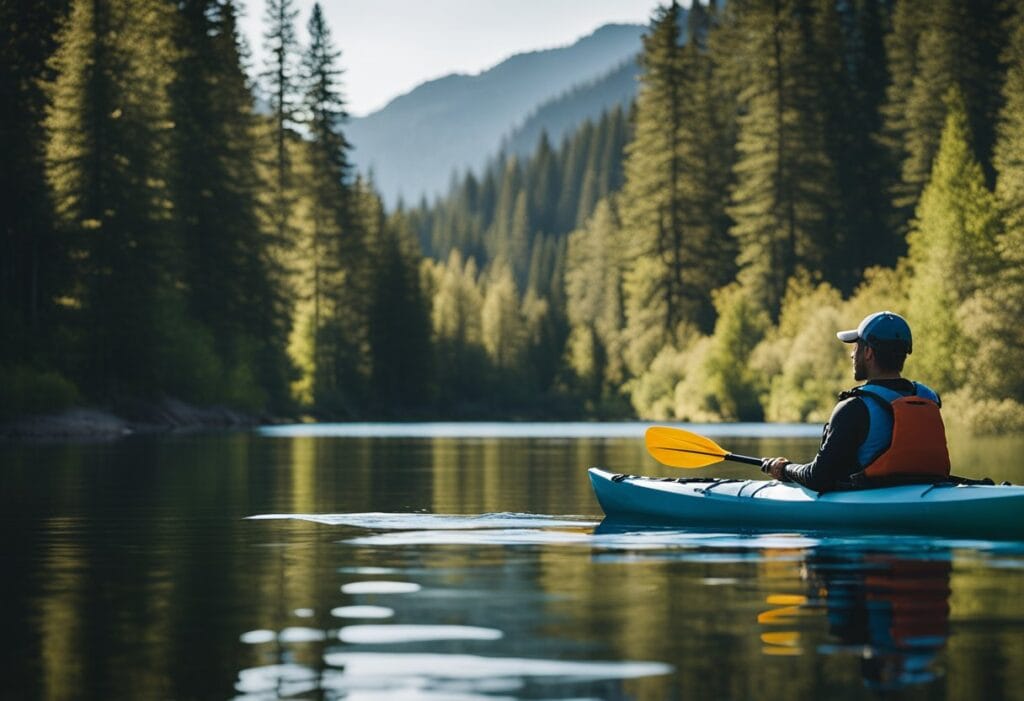
3. Check the Weather
Weather Watch: Key to a Safe Trip: Before heading out, checking the weather can make the difference between a delightful day and a dangerous situation. Lakes like Colorado River can surprise you with sudden wind changes. A sunny forecast can swiftly turn to rain, affecting visibility and water conditions.
4. Plan Your Route
Mapping Your Adventure on the Lake: Familiarize yourself with paddling routes before launching. Whether it’s a serene day trip around a smaller lake or exploring paddling routes in a national park, knowing your entry and exit points, along with any must-see landmarks, ensures a fulfilling experience.
5. Avoid High Traffic Areas
Navigating Away from Boat Traffic: Larger lakes can be busy with boats and jet skis. For a peaceful kayaking experience, seek out areas less traveled or paddle during quieter times of the day. Early morning or late afternoon are perfect for avoiding crowds.
6. Paddle in Suitable Conditions
Seeking Perfect Paddling Conditions: Ideal kayaking conditions include calm water, mild weather, and little to no wind. Lakes in the early morning often offer the calmest waters. However, be prepared to adjust your plans if conditions worsen.

7. Dress Appropriately
Appropriate Attire for Lake Kayaking: Dressing in layers allows you to adjust to changing temperatures. For cold water lakes, a wetsuit or drysuit can provide essential protection. Always consider the water temperature, not just the air temperature, when deciding what to wear.
8. Stay Hydrated and Protected
Hydration and Sun Protection: Spending hours under the sun can dehydrate you quickly and lead to sunburn. Bring plenty of water and apply waterproof sunscreen regularly, especially when kayaking in areas with high sun exposure, like the vast surface area of Lake Superior.
9. Use the Buddy System
Kayaking with a Companion: Kayaking with a friend not only enhances the fun but also increases safety. If you’re new to kayaking or exploring unfamiliar lakes, having someone with you can provide assistance in case of an emergency.
10. Learn Basic Rescues
Mastering Self-Rescue Techniques: Before you hit the lake, familiarize yourself with basic kayak self-rescue techniques. Practicing these skills in a controlled environment can make all the difference if you capsize or encounter difficulties on the water.
11. Respect Wildlife and Nature
Harmony with Nature: Lakes are home to diverse ecosystems. Maintain a safe distance from wildlife, avoid disturbing natural habitats, and adhere to “Leave No Trace” principles to ensure these environments remain pristine for future generations.
12. Be Aware of Local Regulations
Navigating Local Rules: Each lake and national park has its own set of rules regarding kayaking. Some require permits, while others have specific areas designated for paddling. Researching these regulations beforehand can save you from potential fines and ensure a hassle-free experience.
13. Bring Navigation Tools
Staying Oriented: Even on a familiar lake, conditions can change, making it easy to lose your way. Carry a waterproof map and compass or a GPS device. For large lakes or complex paddling routes, these tools are indispensable for safe navigation.
14. Pack Essential Gear
Kayaking Gear Checklist: Beyond your kayak and paddle, essential gear includes a bilge pump, spare paddle, first-aid kit, and waterproof bags for your belongings. For day trips on lakes like the Colorado River, snacks and a camera to capture the scenery are must-haves.
15. Understand the Impact of Wind
Wind: Friend or Foe: Wind can significantly affect your kayaking experience, turning calm waters into challenging conditions. Learn to read the wind direction and strength, and plan your route to paddle with the wind at your back when possible, conserving energy.

16. Practice Paddling Techniques
Enhancing Your Paddling Skills: Efficient paddling techniques not only make kayaking more enjoyable but also reduce the risk of injury. Practice different strokes to navigate effectively, maintain balance, and maneuver your kayak with precision.
17. Stay Close to Shore
The Safety of the Shoreline: Especially for beginners, staying close to the lake’s shores allows for easier access to land if conditions worsen or if you need a break. It also provides a unique perspective to explore the lake’s edge and observe wildlife.
18. Know When to Turn Back
Wisdom in Retreat: Always be prepared to cut your trip short if conditions become too challenging or if you feel fatigued. The beauty of kayaking is that the lake will be there for another day, allowing for a safe and enjoyable return.
19. Take a Guided Tour
The Benefits of a Guided Kayak Tour: For those new to kayaking or visiting a large lake like Lake Superior, a guided tour can offer valuable insights into the best paddling routes, local history, and hidden gems that you might otherwise miss.
20. Explore Different Lakes
Variety: The Spice of Kayaking: Each lake offers a unique kayaking experience. From the cold waters of Lake Superior to the calmer waters of smaller lakes, diversifying your kayaking locations can enhance your skills and enrich your appreciation for nature.
21. Adjust Your Expectations
Embracing Flexibility: Not every kayaking trip will go as planned. Weather, water conditions, or unexpected closures can affect your experience. Adopting a flexible mindset allows you to enjoy the adventure, regardless of the conditions.
22. Respect Other Boaters
Sharing the Lake: Lakes are shared spaces, and respecting other boaters ensures a pleasant experience for everyone. Keep a safe distance, avoid obstructing paths, and be mindful of wake that can affect smaller vessels like kayaks and canoes.
23. Take Breaks and Enjoy the Scenery
The Joy of Pausing: Part of the allure of kayaking is the ability to explore at your own pace. Take breaks to relax, swim, or enjoy a picnic on the shore. These moments of rest allow you to fully absorb the beauty around you and make memories that last a lifetime.
24. Keep an Eye on Water Temperatures
Cold Water Awareness: Especially in early spring or late fall, lakes can be deceptively cold. Cold water poses a risk of hypothermia, even if the air temperature feels warm. Dress accordingly and know the signs of cold water shock.
25. Capture the Moment
Photographing Your Journey: Documenting your kayaking adventures allows you to share your experiences and relive them later. Waterproof cameras or phone cases can protect your equipment from water damage while you capture the stunning landscapes and wildlife encounters.
26. Leave No Trace
Preserving Natural Beauty: Adhering to Leave No Trace principles involves minimizing your impact on the environment. Carry out all trash, avoid disturbing wildlife, and stay on designated paddling routes to protect the ecosystem.

27. Engage with the Kayaking Community
Joining the Paddling Community: Engaging with other kayakers can enhance your knowledge, skills, and enjoyment of the sport. Join local kayaking clubs, participate in events, and share experiences to foster a sense of community and mutual respect for the waterways.
28. Reflect on the Experience
The Value of Reflection: After each kayaking trip, take time to reflect on what you learned, what you enjoyed, and what you might do differently next time. This practice deepens your connection to kayaking and encourages continuous improvement and appreciation for the sport.
Kayaking in a lake offers a unique blend of adventure, relaxation, and connection with nature. Whether you’re paddling through the serene waters of a national park, navigating the shores of Lake Superior, or exploring the calm waters of a local pond, these 31 tips will ensure your kayaking experience is safe, enjoyable, and unforgettable. Embrace the journey, and let the lakes inspire your next adventure.
What Are the Health Benefits of Kayaking?
Kayaking, a paddler’s dream, offers more than just a fun day on the water; it’s a comprehensive workout that benefits both the mind and body. Whether you’re navigating the tranquil waters of a local lake, exploring paddling routes on Lake Superior, or enjoying the serene beauty of other lakes, kayaking engages your upper body, core, and even legs as you paddle through the water. It’s not just about the physical exertion; kayaking in a lake or down a river brings you closer to nature, offering a peaceful escape from the hustle and bustle of city life. This connection to the outdoors can significantly reduce stress, improve mental health, and enhance your overall well-being. With the opportunity to go kayaking year-round in various climates, from the icy waves of winter to the gentle breezes of summer, it’s an accessible activity for many. Whether you own a kayak or rent one, are guided by an experienced guide or head out on a solo adventure, kayaking promises a unique blend of adventure, relaxation, and fitness benefits, making it a cherished activity for paddlers everywhere.
Final Thoughts
Owning a kayak or canoe opens up a world of adventure, offering the freedom to explore the largest lakes, serene rivers, and hidden shorelines at your own pace. Whether your paddling route takes you through the rugged beauty of mountains, past the bustling activity of docks, or into the tranquil expanse of the sea, each journey is an invitation to connect with nature on a deeper level. Fishing enthusiasts find a special joy in the quiet corners of rivers and lakes, where they can cast their lines in peace. Meanwhile, those who seek a more dynamic experience can stand up in their kayaks, navigating through rocks and waves, or combine their water adventures with hiking to discover breathtaking vistas. As more people seek out these authentic outdoor experiences, the importance of preserving our natural landscapes becomes even more apparent. Kayaking not only offers a unique way to explore and appreciate the beauty of the south and beyond but also reminds us of the need to protect these pristine environments for generations to come.
Frequently Asked Questions
Do I Need My Own Kayak to Enjoy Kayaking in a Lake?
No, owning your own kayak is not a necessity for enjoying lake kayaking. Many lakeside rental services offer a variety of kayaks, allowing you to try different types before deciding to purchase one. Rentals often include all the necessary equipment, such as paddles and life jackets, making it easy for beginners to get started.
Can I Kayak in Any Lake, Including the Largest Lake?
Yes, you can kayak in virtually any lake, from small local ponds to the largest lakes. However, larger lakes may have more challenging conditions, such as stronger winds and waves, requiring more experience. Always check local regulations and weather conditions before heading out, especially in vast water bodies.
Is It Possible to Fish While Kayaking in a Lake?
Absolutely, fishing from a kayak is a popular activity that combines the tranquility of paddling with the excitement of fishing. Kayaks offer the advantage of accessing remote or shallow areas where fish are plentiful, that are often unreachable by larger boats. Ensure your kayak is stable enough and equipped with rod holders for a seamless fishing experience.
What Kind of Paddles Do I Need for Lake Kayaking?
The type of paddles needed for lake kayaking depends on factors like your height, strength, the width of your kayak, and paddling style. For calm lake waters, lightweight paddles with a medium-sized blade offer a good balance between efficiency and ease of use. Adjustable and breakdown paddles are also practical for easy transportation and storage.
How Do I Use a Dock for Kayaking Launch and Return?
Using a dock for launching and returning with a kayak involves a few steps to ensure safety and ease. Approach the dock parallel and as close as possible. When launching, lower yourself into the kayak from the dock, using your hands to stabilize yourself. For returning, paddle up alongside the dock, then carefully transition from your kayak to the dock, using your hands for support and balance.


